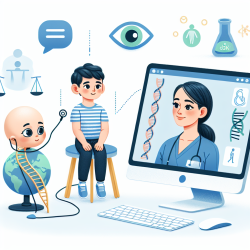Introduction to ARG-SHINE
In the realm of antibiotic resistance, the classification of antibiotic resistance genes (ARGs) is crucial for effective treatment and understanding microbial dynamics. The recent study, "ARG-SHINE: improve antibiotic resistance class prediction by integrating sequence homology, functional information and deep convolutional neural network," introduces a novel method that enhances ARG classification accuracy by combining various data sources.
Understanding ARG-SHINE
ARG-SHINE is an ensemble method that utilizes a learning-to-rank (LTR) approach to integrate three component methods: ARG-CNN, ARG-InterPro, and ARG-KNN. Each method brings a unique perspective:
- ARG-CNN: Employs deep convolutional neural networks to analyze raw protein sequences, extracting local features related to antibiotic resistance mechanisms.
- ARG-InterPro: Utilizes protein domains, families, and motifs for logistic regression, leveraging biological domain knowledge.
- ARG-KNN: Aligns sequences against a training database using BLAST, applying the k-nearest neighbor method for classification.
Why ARG-SHINE Outperforms Other Methods
ARG-SHINE has demonstrated superior performance on benchmark datasets, achieving higher accuracy, macro-average f1-score, and weighted-average f1-score compared to existing methods like BLAST, DIAMOND, and DeepARG. The integration of multiple data sources allows ARG-SHINE to classify ARGs more accurately, even those with low similarity to known sequences.
Practical Implications for Practitioners
For practitioners in the field of speech language pathology and related areas, implementing ARG-SHINE can significantly enhance the prediction of antibiotic resistance classes. This method is particularly beneficial when dealing with sequences that diverge from known ARGs, reducing false negatives and improving treatment strategies.
Practitioners are encouraged to explore ARG-SHINE's capabilities further, as it offers a robust framework for integrating diverse data sources. By leveraging ARG-SHINE, practitioners can contribute to more effective antibiotic resistance management and potentially discover novel ARGs.
Encouraging Further Research
The success of ARG-SHINE underscores the importance of integrating various data sources for complex classification tasks. Researchers are encouraged to explore similar ensemble approaches in other domains, as the potential for improving prediction accuracy is substantial.
To delve deeper into the methodologies and outcomes of ARG-SHINE, practitioners and researchers can access the original research paper: ARG-SHINE: improve antibiotic resistance class prediction by integrating sequence homology, functional information and deep convolutional neural network.










